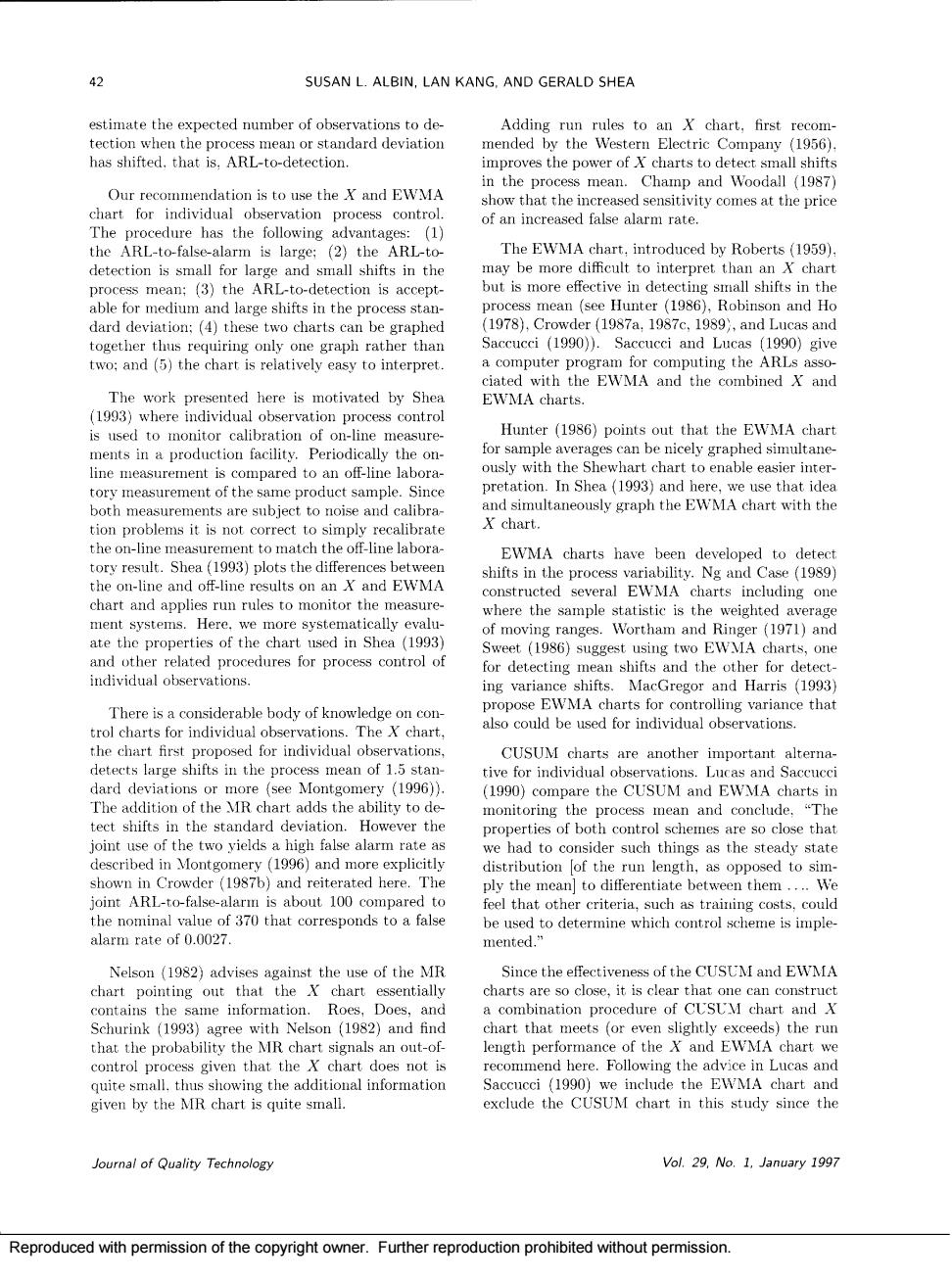正在加载图片...

SUSAN L.ALBIN,LAN KANG.AND GERALD SHEA estimate the ex pected number of obse to da to an X chart.first re ection when the proc s mean or standard deviation has shifted.that is,ARL-to-detection. how that the the ha the ARL-to-false-alarm is large:(2)the ARL introduced by Roberts (1959 and small shifts in the rkenneeitacem pro Hunter (1986 Robinson and Ho dard deviation:(4)these two charts can be graphed wo: a computer program for computing theR (1993)where individual observation process Hunter (1986 hat the EWMA char for sample averages can be nicely graphed simultane ion ously with the Shewhart chart to enable easier inter tory measurement of the same product sample.Since e and (19 calibra ith the X chart tory resut Shea (13) A charts have heom-】 s where the sample statistic is the weighted average properties of the chart used in Shea (1993) of moving ranges Wortham ane (1971)an fvleintrlwoeduresforprocesoarolof for detecting mean shifts and the othefor detect ing variance shifts. MacGregor and Harris (1993 nsiderable hodt of k he chart first CUSUM charts are another important alterna 11 The addition of the MR chart adds the ability to de the USUA tive for individual obs T tect shifts in the standard deviati o.However the had to r such things as the steady state shown in Crowder(1987b)and reiterated here.The feel that other criteria.such as training costs.could f370 be u Nelson (1982)advises the use of the mr Since the effectiveness of the custm and ewma charts are so close,it is clear that 19g ame Do procedure rt and that th bability the MR chart signals an out of length performance of the and EWMA chart we control proces Joural of Quality Technology Vol.29.No.1.January 1997 Reproduced with permission of the copyright owner.Further reproduction prohibited without permission. Reproduced with permission of the copyright owner. Further reproduction prohibited without permission